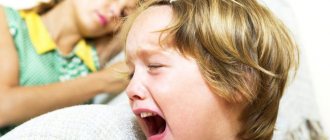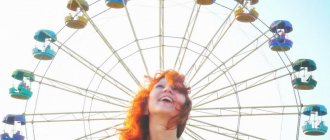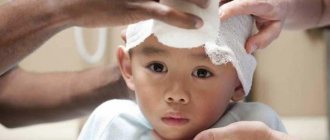Cerebral palsy is a broad concept that unites a group of movement disorders that progress against the background of damage to brain structures in the perinatal period. The pathology is characterized by intellectual impairment, mental disorders, gait disturbances and motor coordination. In the first year of life, children noticeably lag behind their peers in motor and mental development. People with cerebral palsy need lifelong rehabilitation, medication, physiotherapy and surgical treatment as indicated.
General information about the disease
Cerebral palsy is a motor function disorder that occurs as a result of serious changes in brain structures. According to statistics, the frequency of this diagnosis is 2-7 cases per 1000 people among children under 1 year of age. The prevalence among premature newborns increases 10-fold.
Depending on the area of localization of the affected area of the brain, there are 5 types of lesions.
- Spastic diplegia. Prevalence is about 40% of the total number of cases. Characteristic damage to the motor centers leads to the development of paresis affecting the legs. The hemiparetic form is characterized by damage to the motor centers of one of the hemispheres.
- Hyperkinetic form. Characterized by damage to subcortical structures. Hyperkinesis intensifies against the background of excessive excitement or fear of the child.
- Atonic-astatic form. Diagnosed when a lesion is detected in the cerebellum. This form is characterized by impaired statics and coordination, muscle atony.
- Double hemiplegia. The most severe form, resulting from volumetric damage to both hemispheres of the brain. Children are unable to sit or stand and cannot hold their head up on their own.
- Mixed forms. Characterized by a combined manifestation of symptoms inherent to varying degrees in each type.
In the first few days or even months of life, the child is no different from his peers. Symptoms of cerebral palsy may appear much later. Their severity depends on the degree of brain damage, timely diagnosis and treatment. The clinical picture inherent in the pathology looks like this:
- decreased or increased muscle tone;
- skeletal deformity;
- preservation of reflexes that disappear in healthy children under 6 months of age;
- convulsions;
- problems in the functioning of the organs of vision and hearing;
- violation of the swallowing reflex.
The main reason provoking the disease is the negative impact of various damaging factors on the child. This influence provokes the death of certain parts of the brain. The prerequisites for the development of the disease appear against the background of pathologies of pregnancy and infections.
Are you experiencing symptoms of cerebral palsy?
Only a doctor can accurately diagnose the disease. Don't delay your consultation - call
Diagnosis of cerebral palsy begins with a full examination by a pediatric neurologist. If neurological spectrum disorders are suspected, instrumental diagnostics are used:
- encephalography;
- transcranial magnetic stimulation;
- electromyography;
- electroneurography.
The listed methods allow us to differentiate the pathology and exclude other congenital defects of a neurological nature.
The most common consequences include:
- disability;
- violation of social adaptation;
- arthrosis;
- muscle contracture;
- lack of positive dynamics;
- Difficulty eating due to impaired swallowing.
If a child has a risk of developing cerebral palsy, prevention of its development is provided immediately after birth (if the condition is critical, after its normalization). In their practice, rehabilitators use several schemes, determining the optimal one, depending on the risk group into which the child falls.
If the risk is low, use fitball exercises, developmental gymnastics, aquatherapy, baby yoga, dynamic gymnastics, massage, and physiotherapy with caution. At high risk, neurological physiotherapy, aqua therapy, massage, and physiotherapy are used. Courses are conducted every month until the child is 1.5 years old. Parents reinforce the effectiveness of sessions at home by conducting classes according to the recommended scheme.
Will early intervention help cure cerebral palsy?
According to most doctors, cerebral palsy cannot be cured. Infantile paralysis is a consequence of perinatal damage to the nervous system (PPN). Some phases of this disorder can develop into cerebral palsy, while others can be stopped. Knowing how to do this requires early diagnosis and correction.
Modern researchers agree that intervention is necessary from the first days of life. The sooner, the more effective the help. After the birth of the baby, correction and development of the sick child can be carried out by parents on the recommendation of a neurologist.
Causes of cerebral palsy
The number of children born immature with a diagnosis of PPP NS and cerebral palsy is growing every year. The perinatal period begins from the 22nd week of pregnancy. There are 4 groups of PPP of the NS in accordance with the reasons: hypoxic, traumatic, dismetabolic and toxic-metabolic, damage to the central nervous system in infectious diseases. The causes of perinatal lesions and cerebral palsy are divided into prenatal and postnatal.
Prenatal intrauterine: cardiovascular, infectious diseases of the mother during pregnancy, endocrine disorders, immunological incompatibility of the blood of mother and fetus, oxygen starvation of the fetus during pregnancy or childbirth, prematurity. Postpartum: consequences of meningitis, complications after vaccination (not all vaccines cause complications, but a small percentage do), consequences of encephalitis, meningoencephalitis, traumatic brain injury.
Modern researchers have identified the main cause of PP of the central nervous system and cerebral palsy - hypoxia during pregnancy, which is now diagnosed in every second woman in labor. The risk of developing cerebral palsy in a child increases even in the womb. But this is often overlooked. A sedentary lifestyle, poor diet, and bad habits are risk factors that depend on the mother herself. 70% of PPP NS and cerebral palsy are an intrauterine problem, 20% are damage during childbirth, asphyxia. It has been confirmed that asphyxia occurs due to hypoxia during pregnancy. Only 10% of damage to the central nervous system is postpartum problems.
Early help
Over the past decade, the number of children with disabilities has tripled. Children with disorders of the emotional-volitional sphere and with severe multiple developmental disorders (SMDD) were added to the generally accepted classification. Considering the criticality of the situation, early help for such children is important. Experiments have proven: the earlier psychological and pedagogical support begins, the greater the chances for positive changes.
Typically, habilitation of patients with cerebral palsy begins at 1-3 years of age, but most often it does not bring positive results. The ability of the child’s brain to restore impaired functions and capabilities of the whole organism is high in the first months of life. The newborn’s brain is able to form new neurons in response to damaged ones, so pathological changes are more amenable to correction. Recovery occurs more completely than with advanced disorders with irreversible structural changes.
It is during this period of life that it is still possible for the nerve cells of the brain to mature to replace those lost after hypoxia, and for the formation of new connections between them to ensure the normal development of the body as a whole. In some cases, the child can be brought to normal. An integrated approach to treatment is required: early diagnosis, timely medication intervention and psychological and pedagogical support for the child. This is the key to restoring the functions of damaged organs.
Today experts say that after a year it is too late to help. Early habilitation is based on the child’s compensatory potential during the period of rapid growth and brain development, which begins at two months of age and helps prevent a number of disorders. The brain receives sensory information in the prenatal period (1 block is formed by 75%). It is necessary to carry out prevention during intrauterine development.
Timely early assistance allows you to more effectively compensate for the consequences of neurological and physical disorders. This helps to mitigate or prevent the development of secondary deviations in the child’s development.
Phases of the course of cerebral palsy
Phase I
– acute period up to 1 month of life, associated with hypoxia and circulatory disorders, manifested in the form of depression or excitation syndrome of the central nervous system.
II phase
– the genetic self-healing program is activated at 2-3 months of life, regardless of the child’s condition. The severity of neurological disorders decreases, the general condition improves, motor activity increases, muscle tone and reflexes normalize. This is explained by the fact that the damaged brain does not lose its ability to recover, but by the 3rd month of life an increase in spastic phenomena may occur. If during this period we provide medical and pedagogical support and help the child form new neural connections, then the self-healing program will give a positive response in the treatment of cerebral palsy. If polysensory stimulation is not included, the program will begin to curtail and by 3 months the disease will begin to progress.
III phase
– spastic phenomena at 3-6 months of life with a predominance of muscle hypertension. If the child has previously received comprehensive medical and psychological assistance, his motor activity may increase. The child will begin to throw back his head, bend his arms at the elbows, press them to his chest, cross his legs, and stand on his toes when leaning (although there are still cramps and tremors). If help was not provided, then the emerging progress in the second phase of the disease is consolidated and is detected in the form of a decrease in neurological disorders. Pathological symptoms continue to increase, but there is still a minimal chance of a reverse process.
IV phase
- end of the disease. Help will no longer have an impact, there is no reverse development of cerebral palsy.
At 7-9 months of life, children with PPP NS are divided into two groups: 20% with psychoneurological disorders, 80% with normalization of previously observed changes in the central nervous system. It makes complete sense to work with mothers in the first months of life in order to avoid pathology. The outcome of the disease is influenced by timely, comprehensive medical, psychological and pedagogical support not only for the child with cerebral palsy, but also for the family. It is important that the mother receives psychological support and improves her teaching competence.
Read more about the causes and forms of cerebral palsy
How to see a violation
In addition to the physical abnormalities of a child with an affected nervous system, it is important to know the indicators of the child’s speech and mental development at each period of life. Parents are the first assistants to their children, so they must study the ontogenesis of the child’s development in advance. If the baby does not perform some actions by the 1st month of life, you need to consult a neurologist who will tell you whether there is a developmental delay or not.
As an example, I will give a list of skills that a healthy newborn child from 1 to 12 months should have. The list is taken from methodological recommendations No. 24 of the Moscow Department of Health (see pages 17-20).
If you lack any skill, you should contact a neurologist who will give recommendations on how to help your child. The complex of medical and psychological support for a newborn with developmental disabilities necessarily includes massage, breathing exercises, adaptive physical education, speech therapy support, physiotherapy, dance electrical stimulation, etc.
Yulia Savelyeva
Treatment information
Treatment of cerebral palsy with restoration of quality of life to a full level is possible if you follow the doctor’s recommendations. You shouldn’t count on achieving quick results; these involve many years of training, courses of therapy, and sometimes operations. Much depends on the severity of the disease and how early cerebral palsy is detected. If symptoms are detected early, the prognosis is encouraging.
During the first months after the birth of a child (if a presumptive diagnosis is not established immediately after birth), the following signs help to suspect the disease:
- hypotension;
- pain syndrome (characterized by a loud cry);
- tremor;
- chaotic movements of limbs;
- taking unnatural poses;
- grimaces;
- convulsions;
- reflex disorders.
A neurologist diagnoses the disease. Additionally, consultations with specialized specialists are indicated: ophthalmologist, otolaryngologist, psychiatrist, orthopedist. If the causes of cerebral palsy have not been established, and the diagnosis must be differentiated from other hereditary diseases, genetic and biochemical methods are used.
It is impossible to determine the time frame for recovery. Each case is unique. The classification of cerebral palsy includes several forms of the disease, each with a different prognosis. The most severe is for children with double hemiplegia. Full recovery is impossible.









